Most people assume that their knee pain is caused by problems with the functioning of their knee joint. However, in most cases the source of the problem stems from muscle (and accompanying movement) dysfunction elsewhere in the body.3 In fact, weak glutes are often a major cause of knee pain says Justin Price – creator of The BioMechanics Method Corrective Exercise Specialist certification.
Weak Glutes and Knee Pain
The knee joint is primarily a hinge joint that is designed to move forwards and backwards.1,4 It can also move (to a lesser extent) from side to side and in rotation. One of the major glute muscles that helps control these movements is the gluteus maximus muscle.3,4 When the gluteus maximus muscle is not functioning correctly movements of the knee become problematic and overtime stress and pain can result.3,4
Anatomy and Function of the Gluteus Maximus Muscle
Traditional anatomy texts teach us that the gluteus maximus muscle originates on the back of the pelvis and lower back area, travels across the back of the hips and attaches on the outside of both the upper and lower leg (via the Iliotibial Band) (see Figure 1).1,2,4 We also learn from these books that the function of the gluteus maximus muscle is to help push the hips forward and rotate the leg outwards.2
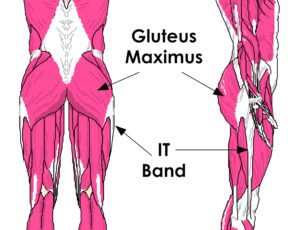
Figure 1: Anatomy of the Gluteus Maximus Muscle
However, information on functional anatomy teaches us that this muscle works very differently during weight-bearing activities like walking, running, lunging and squatting.3,4 During these activities this muscle works in a lengthening fashion like a bungee cord to help decelerate both the upper and lower leg (and the knee) as they move forward, side to side and over the foot. In this regard, the gluteus maximus muscle is directly involved in decelerating stress to the knee and helping reduce pain and injury to this area (see Figure 2).3,4
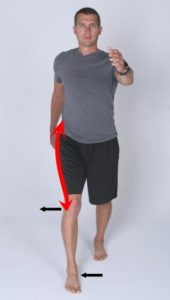
Figure 2: Real-life Function of the Gluteus Maximus Muscle
How to Build Strong Glutes and Pain-Free Knees
It is important to incorporate corrective exercise strategies into your workouts to retrain the gluteus maximus muscle to effectively reduce stress to the knee as it moves. A step-by-step strategy outline this process is detailed below.
Exercises for Retraining Weak Glutes
Begin any corrective exercise retraining program with a series of self-massage techniques to increase blood supply, restore and rejuvenate the muscles you plan to target. This will also help prepare them for the stretching and strengthening techniques that follow.3,4
Tennis Ball Massage on the Butt
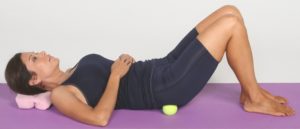
Tennis Ball on Butt
Lie on your back with your knees bent. Place a tennis ball under the right side of your butt. Scoot your body up and down and from side to side to move the ball to any sore spots you find from the base of your spine all the way out to the side of your butt. You can progress this exercise by placing your right ankle on your left knee. When they do this, place a rolled up towel or your left hand under your left hip to help keep your pelvis level. Do each buttock for 1 to 2 minutes. While a tennis ball is the easiest piece of equipment to purchase and use, a foam roller can also be used to massage the gluteal complex.
Foam Roller on Side of Thigh
The iliotibial band on the side of the thigh attaches the gluteus maximus muscle to the lower leg. Increasing blood supply to this structure will encourage correct movement of the legs and knees.
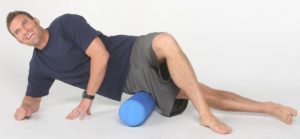
Foam Roller Side of Thigh (i.e., IT Band)
Place a foam roller perpendicular to your right leg and balance your body on your right elbow over the foam roller. Roll up and down over the roller and pause on any sore spots you find. If you have shoulder problems, or find it difficult to balance, simply lie on the ground with your head supported by a pillow, and place a tennis ball under the outside of the thigh. Perform this exercise for 1 to 2 minutes each side.
Stretching
Progress by incorporating the following stretching technique designed to increase the range of motion of the gluteus maximus muscle.
Glute Stretch
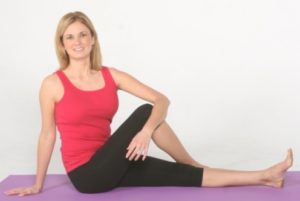
Sit on the floor with one leg straight out in front of you; bend the other leg at the knee and cross it over the straight leg. Place the crossed foot flat on the floor and gently pull the bent knee toward your chest. Be sure to keep the glute being stretched flat on the floor and do not let it rise up. Hold Stretch for 30 seconds to 1 minute on both sides.
Strengthening
Before progressing to more dynamic strengthening exercises it is important to “wake up” the gluteus maximus muscle by reestablishing a better connection with the nerves that supply it. This can be done with the muscle activation technique shown below.
Gluteal Activation Over Ball
This activation exercise highlights and remedies deficiencies in one or both sides of the gluteus maximus muscle.
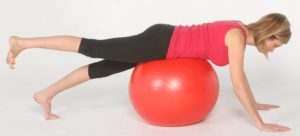
Lie prone over a gym ball using your hands to balance. Tuck your pelvis under and turn your right foot out slightly and try lifting your right leg. As you perform this exercise make sure you keep their hips level and square and pelvis tucked under so you do not arch your lower back. Perform 8 to 10 repetitions on each side.
Strengthening
Once the gluteus maximus muscle is warmed up and active, progress to the strengthening exercise detailed below. This exercise is designed to strengthen the muscles in a lengthening fashion (i.e., like a bungee cord) to produce strong, healthy glutes that can protect the knees from injury.
Lunge with Rotation
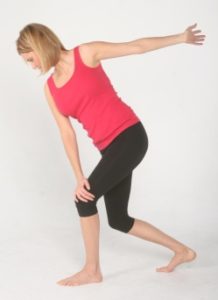
Step forward into a gentle lunge making sure that both feet are facing forward. Bend at the hips and grab the front knee with the opposite hand. Pull the pelvis of the front leg back toward the back foot while pulling the front knee toward the midline of the body. Keep the spine straight (i.e., lean forward at the hips and don not round the spine) until you feel the glute on the leg that is forward activate. Perform exercise isometrically at first holding the lunge position for 5 to 10 seconds and repeat 2 to 3 times. Progress to dynamic movements of 10-15 repetitions on both sides.
A gluteus maximus muscle that is trained correctly can help protect the knees from injury during daily activities and sports. By using strategic self-myofascial release exercises to promote flexibility, activation techniques to get the muscles working correctly, and focusing on eccentric strengthening exercises, you can help both yourself and your clients develop great-looking glutes and pain-free knees.
Fitness, exercise and health professionals interesting in learning more about anatomy, and how muscles and other soft tissue structures affect pain and dysfunction, should check out Module 2 (i.e., Understanding Muscles and Movement) of The BioMechanics Method Corrective Exercise Specialist Certification program or by clicking on the link below.
References
1Dimon, Theodore Jr. and Day, Megan. 2001. Anatomy of the Moving Body: A Basic Course in Bones, Muscles, and Joints. Berkeley, CA: North Atlantic Books.
2Golding, L.A. & Golding, S.M. 2003. Fitness Professional’s Guide to Musculoskeletal Anatomy and Human Movement. Monterey, CA: Healthy Learning.
3Price, J., and M. Bratcher. 2018. The BioMechanics Method Corrective Exercise Specialist Certification Program. 2nd Ed. San Diego, CA: The BioMechanics Press.
4Price, J. 2018. The Biomechanics Method for Corrective Exercise. Champaign, IL: Human Kinetics.
